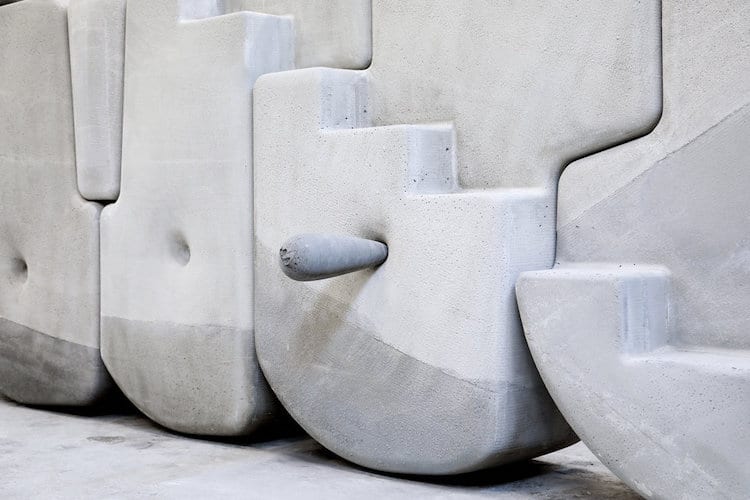
When it comes to moving 25 tons of stone, heavy machinery is probably the first option that comes to mind. But, if we consider massive monuments like the Moai on Easter Island, there must’ve been some way that ancient peoples were able to transport such heavy material without the advent of machines. The Cambridge-based firm Matter Design has come closer to understanding this engineering feat with their research on “weightless” concrete forms. They worked with research and development at CEMEX, a building materials company, and created a way of moving stones that would typically need cranes or other equipment to lift.
The project, called Walking Assembly, was documented in a fascinating video. In it, average-sized people move the large concrete forms from individual pieces into a single group. The stones have rounded edges—making it possible to rock and tip them forward and backward—as well as angular elements that allow the pieces to fit together like jigsaw puzzles. Additionally, giant pegs are inserted into sections of the stones which offer more movement control. When they're all together, the pieces become whole platforms, walls, and staircases.
So, how is it possible to move these giant pieces? The team focused on density in order to make the task a feasible one. “By using variable density concrete,” Matter Design explains, “the center of mass of the object is calibrated precisely to control the stable but easy motion of the elements.”
The research has great potential application in the outside world—particularly in areas that are difficult to reach with machines. It could be easier to assemble structures without the use of heavy machinery as well as taking a modular approach to building them. That way, if something needed to be repaired, the whole thing wouldn’t need to be demolished, just redesigned.
Matter Design and CEMEX collaborated on Walking Assembly, a research project that made it possible for everyday people to try moving heavy stones.


Using variable density concrete, the massive forms—25 tons all together—could easily be rocked and rolled into a singular unit.




Learn more about the project in this fascinating video.
Matter Design: Website
CEMEX: Website
h/t: [designboom]
All images via Matter Design.
Related Articles:
Scientists Analyze Ancient DNA to Solve Mystery of Who Built Stonehenge
Land Artist Arranges Stones and Leaves Into Mesmerizing Mandalas and Spirals






















































































